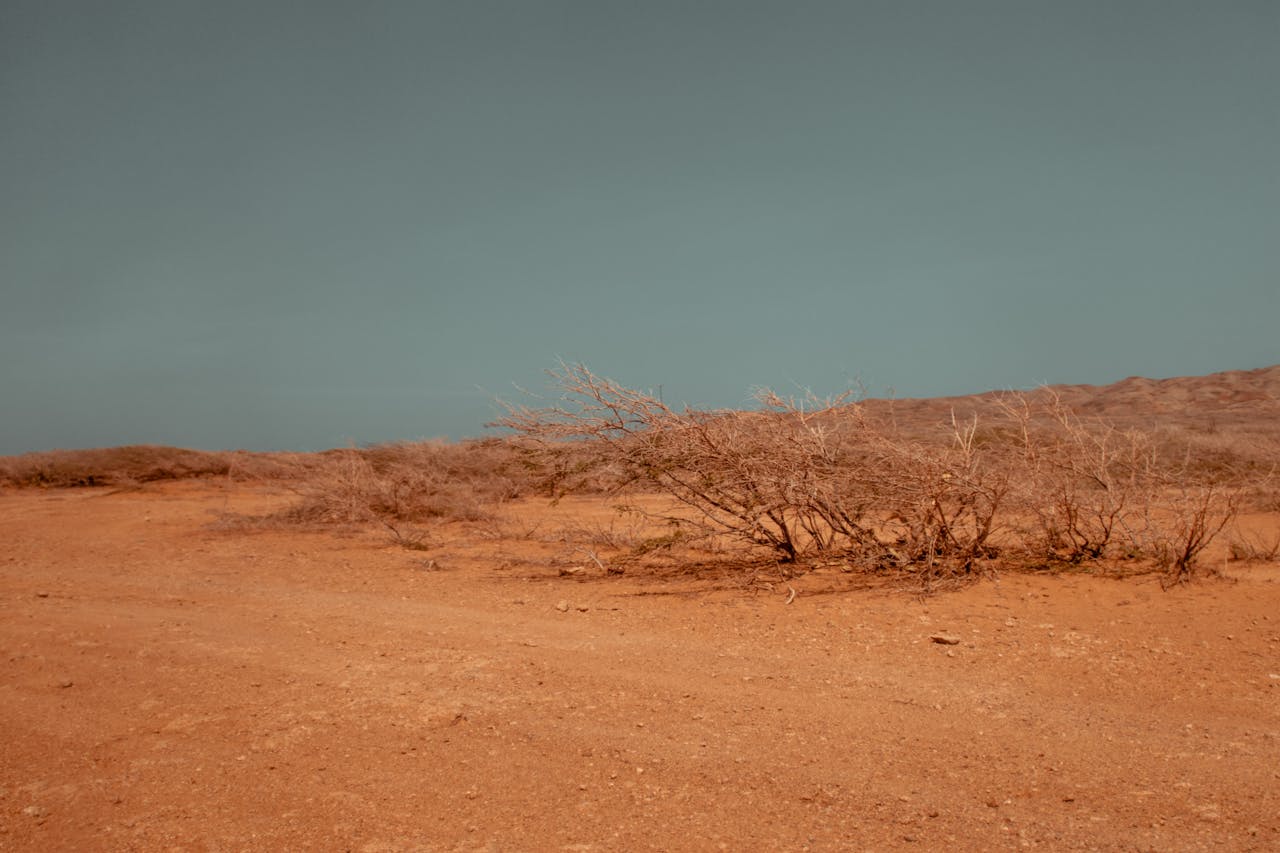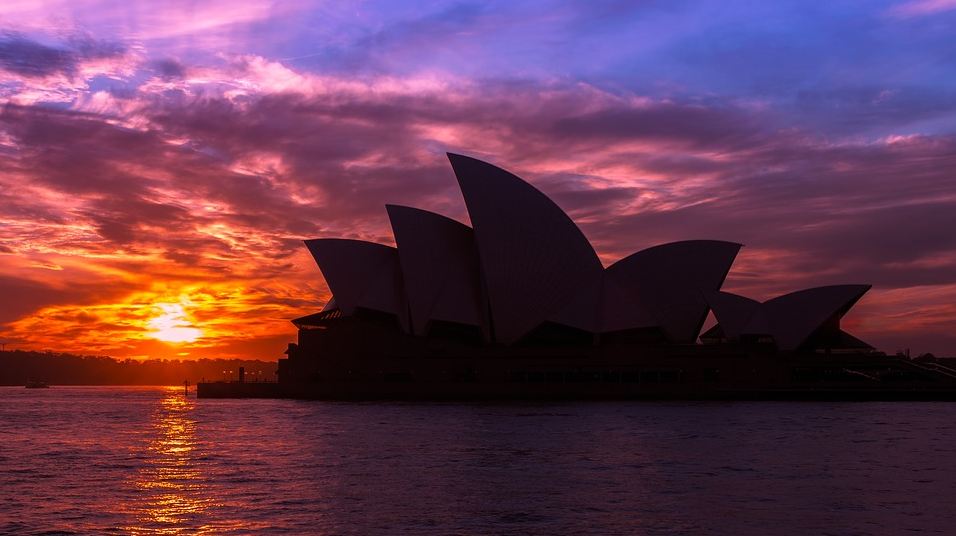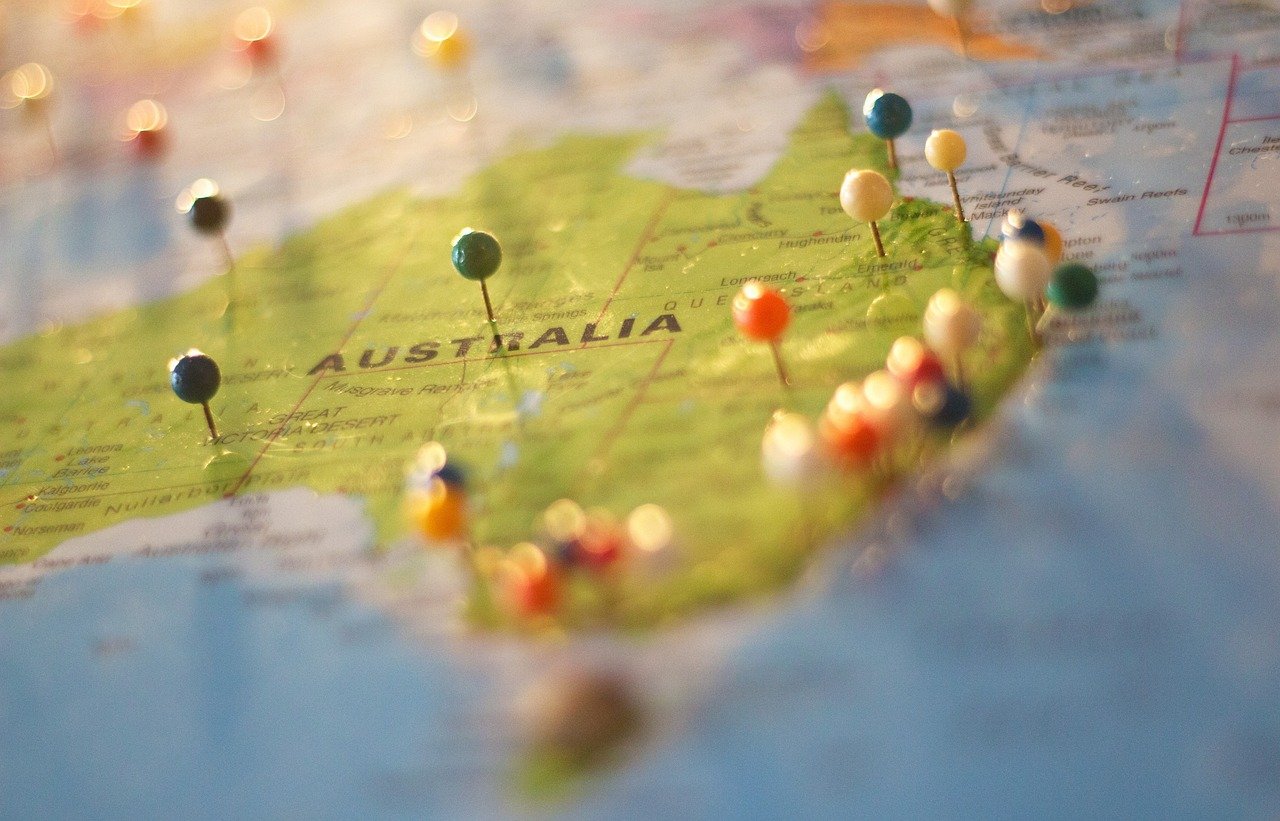What Is the Largest City in Australia? Exploring the Urban Giant
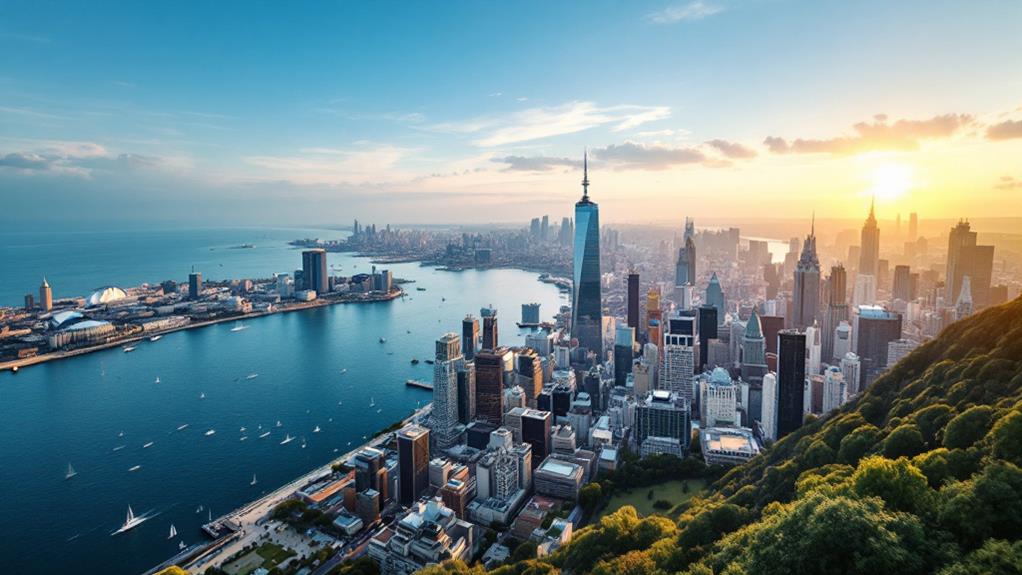
Sydney is Australia's largest city, lively with over 5.4 million people as of 2023. Its colorful urban sprawl covers approximately 12,368 square kilometers. The city is a financial powerhouse, contributing greatly to the nation's economy. You'll find iconic landmarks like the Sydney Opera House and Bondi Beach, adding cultural zest to its urban charm. An extensive transportation network supports this dynamic growth, with exciting projects like the Sydney Metro and Western Sydney Airport on the horizon. Whether it's the multicultural neighborhoods or lively port, there's so much more to this urban giant than meets the eye.
Sydney's Population and Growth
Sydney's population dynamics are a reflection of its status as Australia's largest city. With approximately 5,450,496 residents as of 2023, Sydney holds the title of the largest city in the country by population. This major city has seen impressive growth, with the Greater Sydney area experiencing an 18% increase from 2011 to 2023. Such growth underscores Sydney's appeal as a lively urban center in Australia, attracting residents from across the nation and the globe.
As you navigate through Sydney, you'll notice how its vast metropolitan area spans roughly 12,368 square kilometers. This diverse urban landscape accommodates an ever-growing population while maintaining its charm and livability. The city's allure isn't static; projections suggest that by 2041, Sydney's population will grow by an extra 1.2 million people. This anticipated increase will further cement its standing as a dynamic and evolving major city.
Sydney's population and growth are not just numbers; they're a reflection of its enduring appeal and significance as a leading urban center in Australia. You'll find that this lively city is constantly transforming, reflecting its status and ambition on the global stage.
Economic Influence of Sydney
As Australia's financial powerhouse, Sydney exerts a significant economic influence that echoes beyond its borders. It's more than just a city; it's the country's financial hub, anchoring the Australian Stock Exchange and playing a crucial role in shaping the national economy. With a population exceeding 5.45 million in the Greater Sydney area as of 2023, the city thrives on a robust economy that supports an array of industries. This lively economic landscape is underpinned by a strong services sector, including finance, technology, tourism, and education, all of which are critical in driving job creation and attracting investment opportunities.
Sydney's GDP ranks among the highest in Australia, with a dynamic mix of major corporations and cutting-edge startups choosing the city as their operational base. This choice further amplifies Sydney's economic influence, making it a magnet for business activity. The city's strategic location, coupled with its extensive transportation infrastructure, facilitates trade and commerce, establishing Sydney as a key gateway for international business within the Asia-Pacific region. This strategic advantage not only reinforces Sydney's standing as a financial hub but also guarantees its continued economic growth and influence on a global scale.
Cultural Landmarks of Sydney
Amidst the urban sprawl of Sydney, you'll uncover a tapestry of cultural landmarks that define the city's lively character. These landmarks aren't just structures; they embody Sydney's cultural heritage and spirit. Let's investigate a few of these iconic sites that make Sydney a must-visit destination:
- Sydney Opera House: Recognized globally, this architectural masterpiece is a UNESCO World Heritage Site. With over 1,500 performances yearly, it's a lively hub for arts and culture. Regardless of if you're attending a show or admiring its unique design from the outside, the Opera House is quintessential Sydney.
- Sydney Harbour Bridge: Known affectionately as the "Coathanger," this bridge is more than a way to cross the harbor. The BridgeClimb experience offers you breathtaking views of the city skyline and harbor, making it a memorable adventure.
- Royal Botanic Garden Sydney: Spanning 30 hectares, this garden is a lush oasis in the city. Home to over 7,500 plant species, it's perfect for a leisurely stroll or a picnic amidst nature.
- Bondi Beach: Famous for its golden sands and surf culture, Bondi Beach attracts millions annually. It's not just a beach; it's a lifestyle, reflecting Sydney's lively coastal charm.
Transportation in Sydney
While exploring Sydney's rich cultural landmarks, you'll find that getting around the city is an adventure in itself. Sydney's transportation network is vast and efficient, offering diverse modes of public transport that cater to both locals and visitors. The Sydney Trains network is a cornerstone of this system, with over 1,000 kilometers of track and more than 300 stations. It's designed to make commuting seamless for the city's lively population.
If you're looking to experience Sydney's iconic waterways, the city's ferry network is unbeatable. Boasting the largest ferry system in the world, it features over 30 routes that provide breathtaking views of Sydney Harbour and beyond. Regardless of whether you're commuting or sightseeing, the ferries offer a unique perspective of the city's landscape.
For those who prefer a more active approach, Sydney's bike lanes and pedestrian pathways provide an excellent alternative. The city's commitment to sustainable transport is evident in its growing network of bike-friendly routes that encourage healthy, eco-friendly travel.
With a transportation system that's continually evolving to meet the needs of its residents, Sydney guarantees that every excursion—regardless of whether by train, ferry, or bicycle—is as smooth and enjoyable as possible.
Sydney's Future Developments
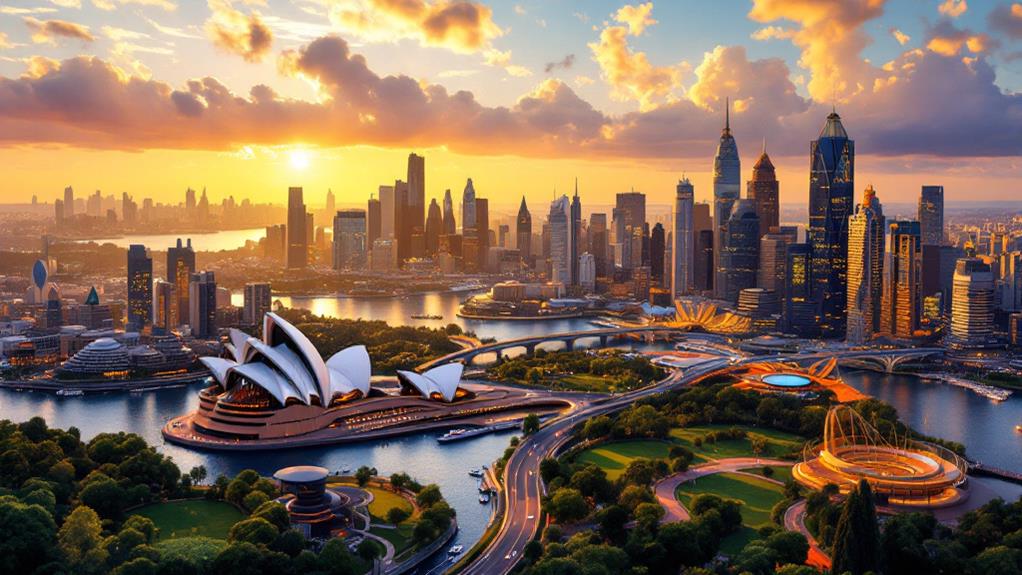
Sydney's future developments promise to reshape the city's landscape and improve the quality of life for its growing population. With the population projected to increase by 1.2 million by 2041, Sydney is gearing up to improve its urban centre and infrastructure in several key ways.
- Western Sydney Airport: Scheduled to open in 2026, this major development will enhance connectivity and economic growth, making travel more accessible and efficient. It's a game-changer for Sydney's infrastructure.
- Sydney Metro Project: Set for completion by 2024, this rapid transit system will drastically improve access across the city, reducing congestion and connecting key areas swiftly. It's a vital step forward for Sydney's urban development.
- Green Square Development: Transforming a former industrial site into a lively urban precinct, this project will house over 60,000 residents, offering parks and community facilities. It's an indication of Sydney's commitment to sustainable and inclusive urban growth.
- Sustainable Sydney 2030 Plan: Focused on reducing carbon emissions and boosting green spaces, this initiative underscores Sydney's dedication to sustainability and a greener future for its urban centre.
These developments reflect Sydney's proactive approach to accommodating its growing population and ensuring a sustainable urban environment.
Comparisons With Other Cities
As Sydney gears up for transformative developments, it's fascinating to compare its growth and strategies with other major Australian cities. As the largest city in Australia, Sydney boasts a population of 5,450,496, maintaining its status as the most populous city in the nation. However, Melbourne, the second largest city, isn't far behind with 5,207,145 residents. Melbourne's impressive 24% growth from 2011 to 2023 highlights its dynamic expansion and its potential to challenge Sydney's dominance in the future.
Meanwhile, Brisbane, the third largest city in Australia, has witnessed the most significant growth rate among the top cities, expanding by 26% since 2011 to reach a population of 2,706,966. This surge showcases Brisbane's appeal and strategic planning, emphasizing its rising prominence on the national stage. Perth and Adelaide, although smaller, each offer unique attributes; Perth's natural resources and beauty, and Adelaide's rich cultural identity as the "city of churches."
In comparing these cities, you can see how each capital approaches growth and development, reflecting their strengths and ambitions. These comparisons highlight the diverse urban landscape across Australia and the competitive spirit driving each city's advancement.
Sydney's Role in Global Trade
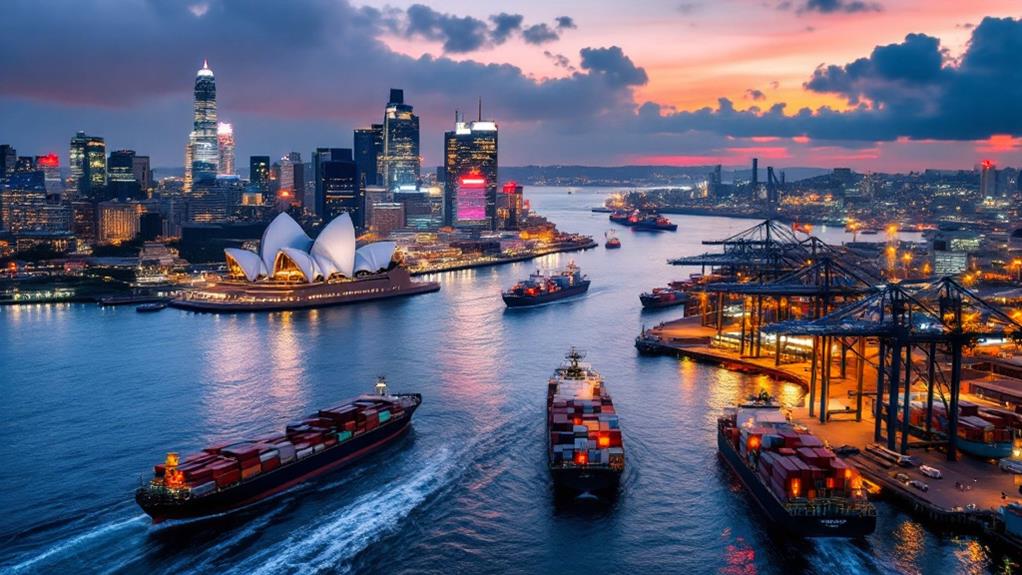
A powerhouse in global trade, Sydney stands as Australia's financial hub. It's not just the largest city by population, but also a significant player in the world economy. Here's why Sydney is central to global trade:
- Financial Hub: Hosting the Australian Stock Exchange and numerous major banks, Sydney is the heartbeat of Australia's financial landscape. Its economic influence reaches far beyond its borders, making it a key player among global cities.
- Port of Sydney: As one of the busiest ports, it handles over 1 million TEUs annually. This lively port is vital for international commerce, connecting Sydney to global markets and facilitating the flow of goods worldwide.
- Strategic Location: Sydney's position in the Asia-Pacific region is strategic for accessing major international markets. Its extensive public transport network further improves its connectivity, making global trade operations seamless.
- Economic Contributions: With over 40% of Australia's exports originating from here, Sydney's impact on sectors like education, tourism, and professional services is undeniable. These exports underscore the city's fundamental role in both national and global economies.
In essence, Sydney doesn't just thrive; it leads. Its role in global trade is a demonstration of its economic power and strategic importance.

